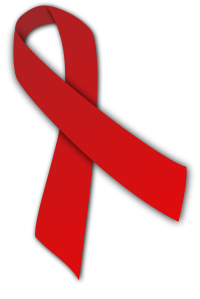
Photo from wikipedia
In 2012, the Centers for Disease Control and Prevention published a Framework for Elimination of Perinatal Transmission of HIV in the United States in Pediatrics, setting the goals of an… Click to show full abstract
In 2012, the Centers for Disease Control and Prevention published a Framework for Elimination of Perinatal Transmission of HIV in the United States in Pediatrics, setting the goals of an incidence of <1 case of perinatal HIV per 100 000 live births, and a perinatal transmission rate of <1%. We used National HIV Surveillance System data to monitor the numbers of perinatally acquired HIV cases among US-born persons and perinatal HIV diagnosis rates per 100 000 live births to approximate incidence. Perinatal HIV transmission rates from 2010 to 2019 were calculated by using estimates of live births to women with an HIV diagnosis from the National Inpatient Sample, Healthcare Cost and Utilization Project. The annual estimated number of live births to women with diagnosed HIV decreased from 4587 in 2010 to 3525 in 2019, and the number of US-born infants with perinatally acquired HIV decreased from 74 in 2010 to 32 in 2019. Annual perinatal HIV diagnosis rates declined from 1.9 to 0.9 per 100 000 live births, and perinatal HIV transmission rates declined from 1.6% to 0.9%. Racial and ethnic disparities in HIV diagnosis rates persisted but declined substantially over the 10-year period. Both diagnosis and transmission rate elimination goals were first achieved in 2019. To maintain the elimination of perinatal HIV, and to eliminate racial disparities, the continued coordinated effort of health care and public health is required. The approach to perinatal HIV elimination is a public health model that can be replicated or expanded to areas beyond HIV.
Journal Title: Pediatrics
Year Published: 2023
Link to full text (if available)
Share on Social Media: Sign Up to like & get
recommendations!